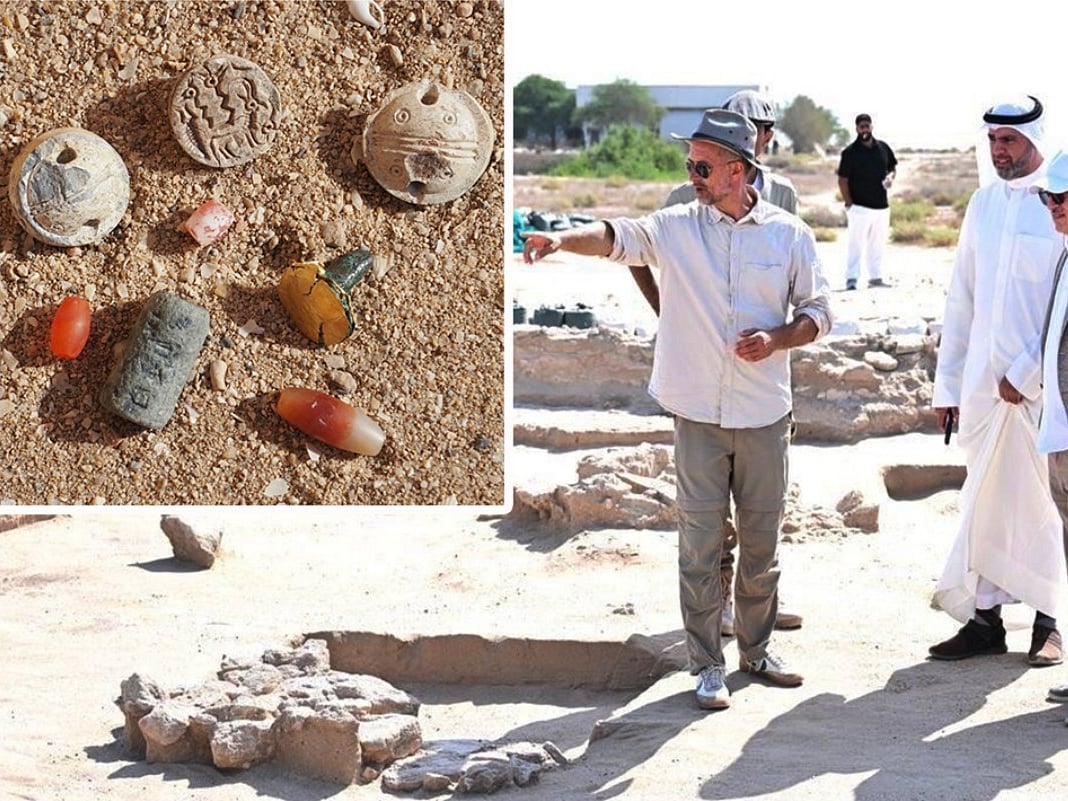Dubai: Archaeologists in Kuwait have uncovered a 4,000-year-old temple dating back to the Dilmun civilization on Failaka Island, in what is being described as one of the country’s most significant archaeological discoveries in decades, Al Qabas newspaper reported.
The find was announced on Sunday by the National Council for Culture, Arts and Letters (NCCAL), which revealed that the ancient structure was discovered by a joint Kuwaiti–Danish team from the Moesgaard Museum during the 2025 excavation season.
According to Mohammed bin Redha, Acting Assistant Secretary-General for the Antiquities and Museums Sector at the NCCAL, the team uncovered the complete layout of a Bronze Age temple located directly beneath another Dilmun temple discovered last year, confirming that two temples were built on the same site, one atop the other, both dating back roughly 4,000 years.
Bin Redha said the NCCAL continues to support archaeological missions engaged in excavation, restoration, and scientific research throughout Kuwait as part of its efforts to preserve and promote the nation’s ancient heritage.
Excavations this season focused on the area east of the Dilmun palace and temple at a mound known as Tell F6, which belongs to the early Dilmun period.
Dr. Stefan Larsson, head of the Danish mission, said previous digs had revealed wall fragments believed to form part of a small temple platform dating to around 1900 BCE.
The newly discovered structure, found beneath that level, included foundations, seals, and pottery vessels, confirming its connection to the early Dilmun period. “This marks a major step in understanding the religious practices of the Dilmun Kingdom,” Larsson said.
Dr. Hassan Ashkanani, professor of archaeology and anthropology at Kuwait University, called the find “a remarkable archaeological milestone”, noting that the discovery of two temples from between 1900 and 1800 BCE adds a new dimension to the understanding of ancient Dilmun’s religious and civic architecture.
The find brings the total number of known temples in the island’s southwest to four, suggesting the area once served as a major administrative and spiritual center in the Bronze Age.
Dr. Ole Herslund, excavation supervisor since 2022, said the ongoing research aims to analyse both temples in detail, from their architectural layouts to the daily rituals practiced within them, to better understand how Dilmun’s religious, cultural, and political institutions shaped life on the island.
Failaka, located about 20 kilometers off Kuwait’s coast, was a thriving hub of the Dilmun civilization, which flourished across the Gulf region during the Bronze Age.
Network Links
GN StoreDownload our app
© Al Nisr Publishing LLC 2025. All rights reserved.
